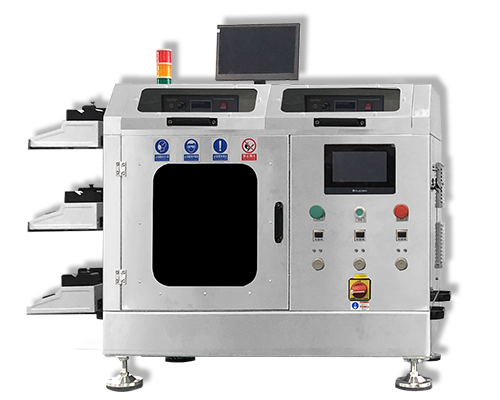What types of cerebrovascular stents are there?
What types of cerebrovascular stents are there? Stent Coater – Cheersonic
Cerebrovascular disease is the leading cause of death and disability among Chinese residents. Like cardiovascular diseases, stents are our main weapon in the treatment of cerebrovascular diseases. But unlike cardiac coronary stents, there are many types of cerebrovascular stents. Today I will introduce to you a wide variety of cerebrovascular stents.
First of all, according to the way the bracket is opened, it can be divided into the following two categories:
The first category: balloon-expandable stents, referred to as balloon-expandable stents. This stent is very similar to a coronary stent. Most of the brackets are made by laser engraving technology, which is carved on a metal cylinder, and finally only the hollow bracket is left; this bracket is not elastic. Then the stent is compressed on a balloon, and the balloon can be stretched by pressure. When the balloon is stretched, the stent is also stretched by the balloon. Since this kind of stent has no elasticity, its advantage is that after the balloon is opened, it will always be maintained like this, and it will rarely be crushed by narrowed blood vessels. Also because it has no elasticity and cannot bend, its disadvantage is that it is generally only suitable for relatively straight blood vessels, and the diameter of the blood vessels is relatively uniform. If there is a large difference in the diameter of the distal and proximal ends of the blood vessels, it is not suitable for this kind of stent.
The second category: self-expanding stent, as the name suggests, this stent can expand by itself. Again, most of them are laser engraved, but the material of this kind of bracket is very elastic. We compress the brackets of these manufactures into a very thin tube. When we push the bracket out of the tube, The stent returns to its original diameter. The advantage of this stent is that the stent has elasticity and can change with the shape of the blood vessel, so it can be placed in a variety of stents with different diameters, shapes and angles. The disadvantage is that the supporting force of the stent is not as good as that of the balloon-expandable stent, and for hard plaques, sometimes there will be relatively heavy residual stenosis.
Secondly, according to different production methods, it can be divided into the following two types:
The first type: laser engraving bracket. On the cylindrical bracket blank, laser is used to hollow out and carve the redundant part, leaving only the beams and columns of the bracket. This method is relatively simple to make stents and easy to release. It can make very small-sized stents, and can even be placed in blood vessels with a diameter of 1mm.
The second type: braided bracket. As the name suggests, this stent is braided with many wires. Due to the memory properties of metal, this stent can also automatically return to its original shape and diameter after release, and has a high supporting force. During release, the stent can be “pushed” into different shapes to accommodate different blood vessels, depending on the skill of the operator. However, this kind of stent requires high skills and experience of the surgeon; in extreme cases, it may fail to open at the corner of the blood vessel that is more urgent.
Finally, according to the different characteristics of the stent mesh, it can also be divided into open-loop stents (the stent mesh is not a closed polygon) and closed-loop stents (the stent mesh is a closed polygon), which are suitable for different vessel shapes and lesion characteristics.
With the advancement of materials, many new types of stents are emerging. For example, the surface of the ball-expanded stent is covered with a drug coating, so that a drug-eluting stent is obtained. The drug on the surface of the stent is released slowly, which is conducive to reducing restenosis in the stent after surgery. The wire of the braided stent is getting finer and finer, and the mesh of the wire of the stent is getting smaller and smaller, so that a dense mesh stent is obtained, which has become the first choice for the treatment of many intracranial aneurysms. It is believed that in the future, there will be more and more ideal stents for the treatment of cerebrovascular diseases.
Cheersonic provides a variety of ultrasonic coating equipment and solutions for manufacturing industry of implantable, in interventional medical devices, the drug-eluting stents and balloon catheters. Our ultrasonic coating systems have been used to spray anti-restenosis drug eluting polymer solutions onto implantable stents. Compared to conventional two-fluid nozzles, ultrasonic nozzles can spray a more uniform drug coating that completely covers the stent without the orange peel and adhesion to a complex stent. And the coatings are much thinner than can be achieved with dip coating, saving spray material.
- Ideal for R&D and low-volume production
- Compact desktop design that is easy to move
- The material usage ratio > 95%
- Reliable, repeatable and consistent coating, uniformity of ±5%
- Max. length 100mm, max. diameter 60mm
About Cheersonic
Cheersonic is the leading developer and manufacturer of ultrasonic coating systems for applying precise, thin film coatings to protect, strengthen or smooth surfaces on parts and components for the microelectronics/electronics, alternative energy, medical and industrial markets, including specialized glass applications in construction and automotive.
Our coating solutions are environmentally-friendly, efficient and highly reliable, and enable dramatic reductions in overspray, savings in raw material, water and energy usage and provide improved process repeatability, transfer efficiency, high uniformity and reduced emissions.
Chinese Website: Cheersonic Provides Professional Coating Solutions


